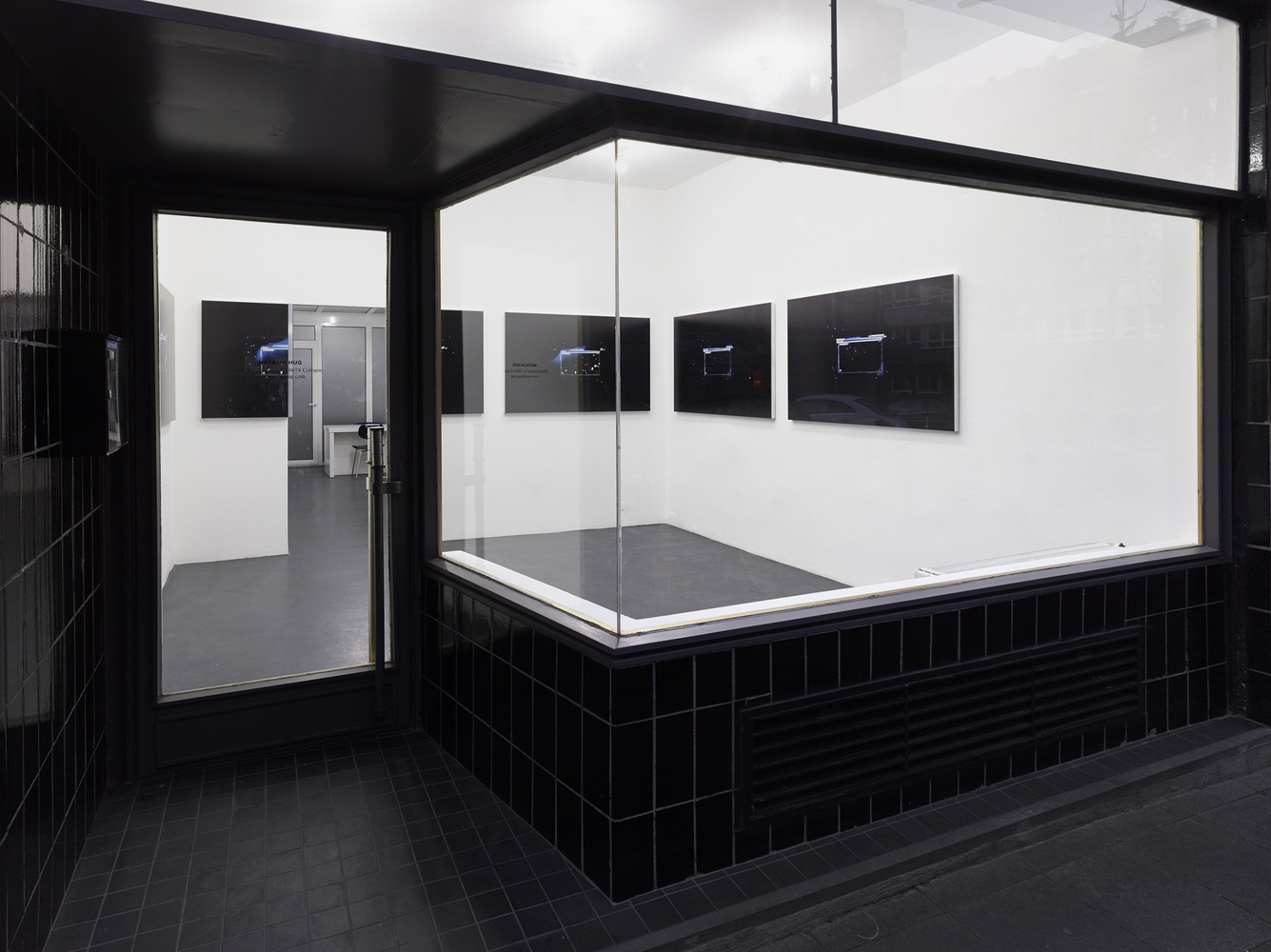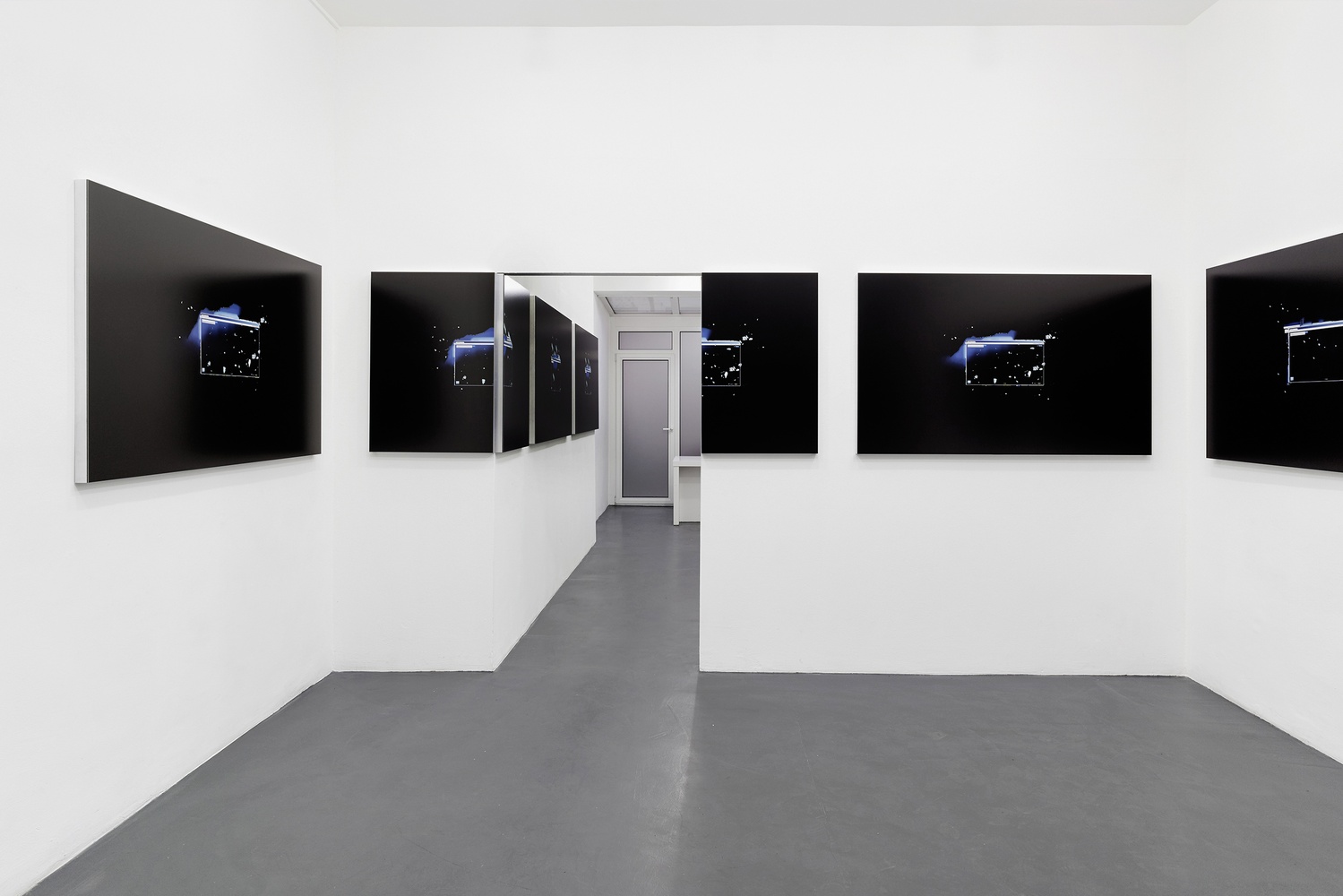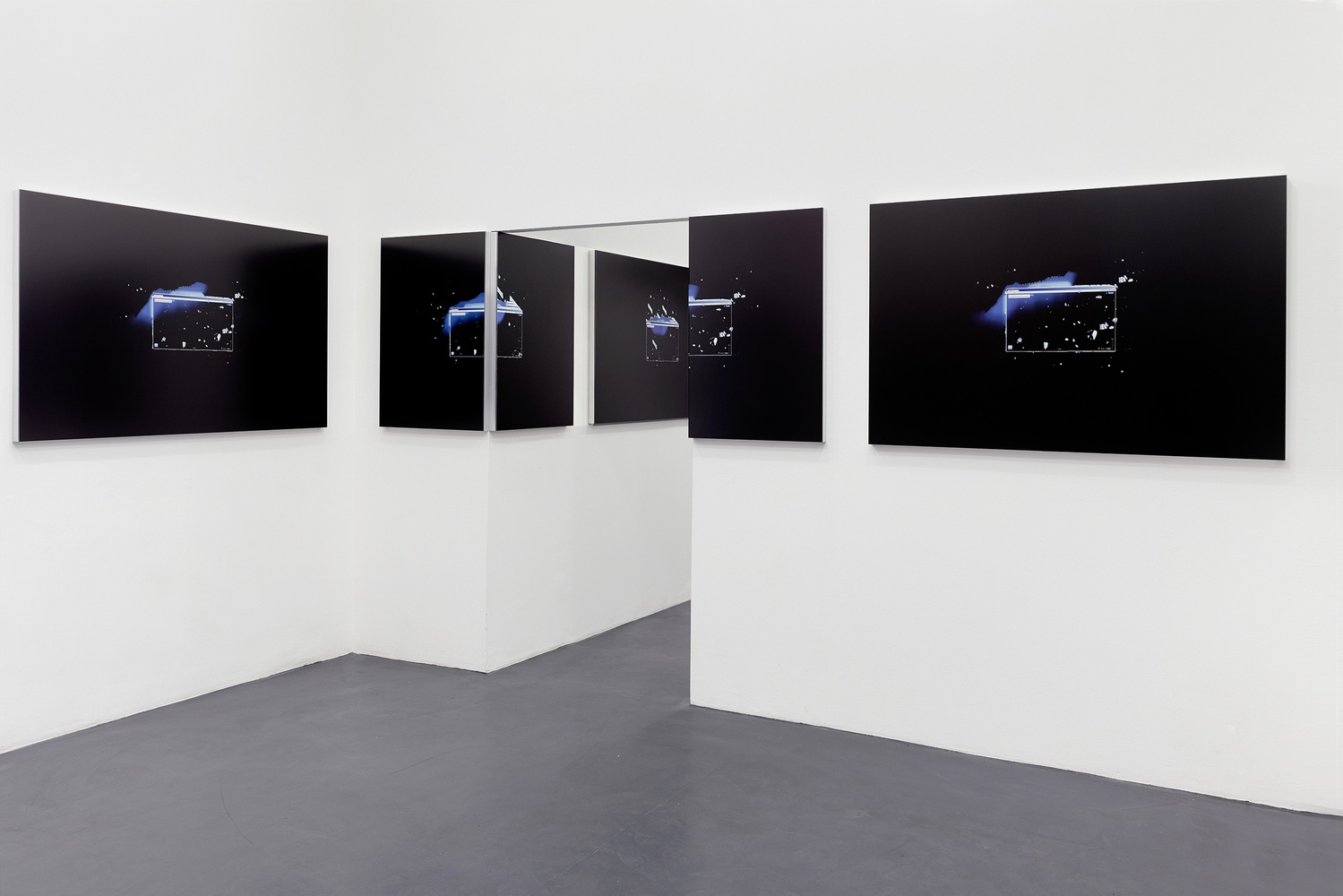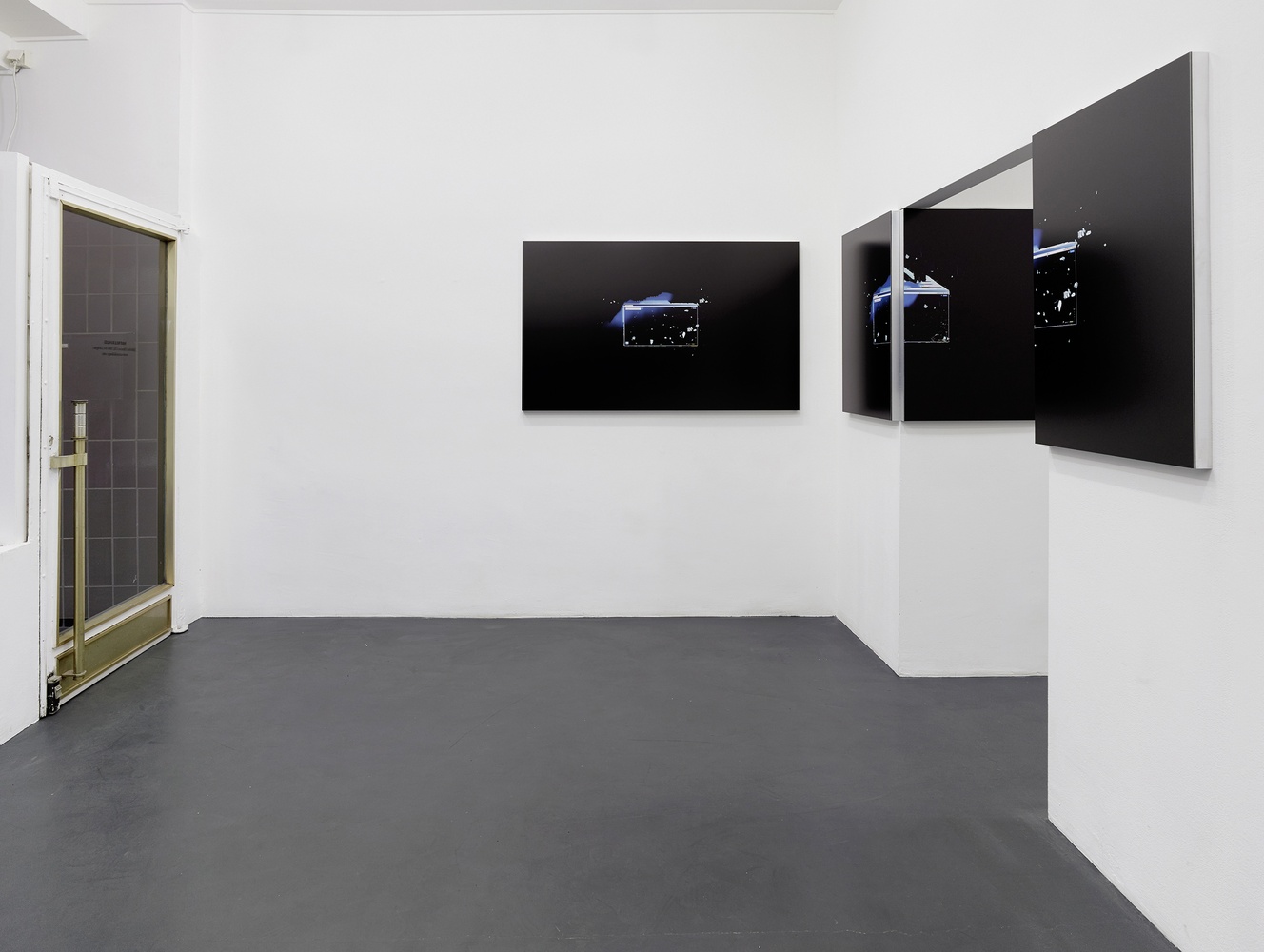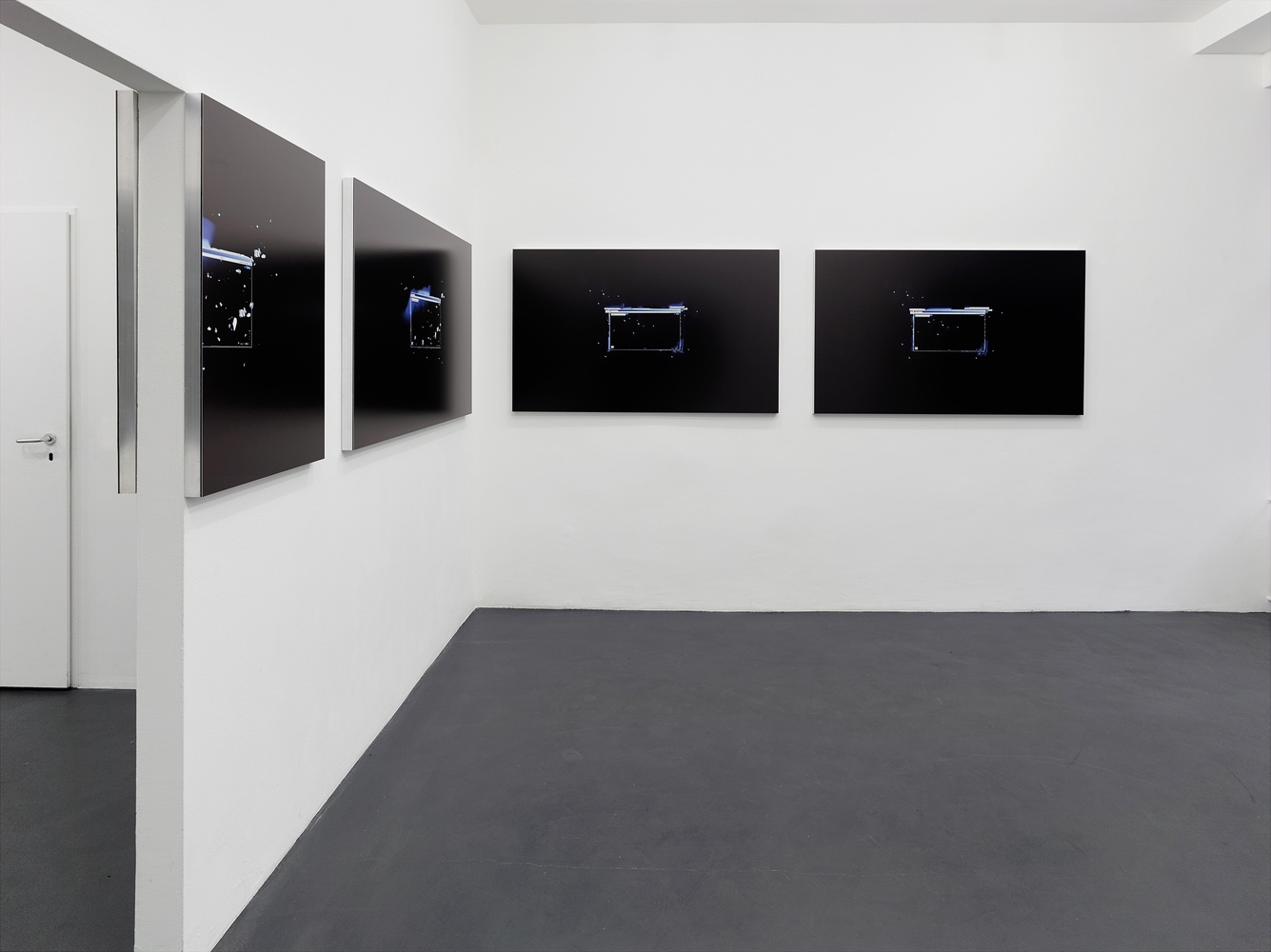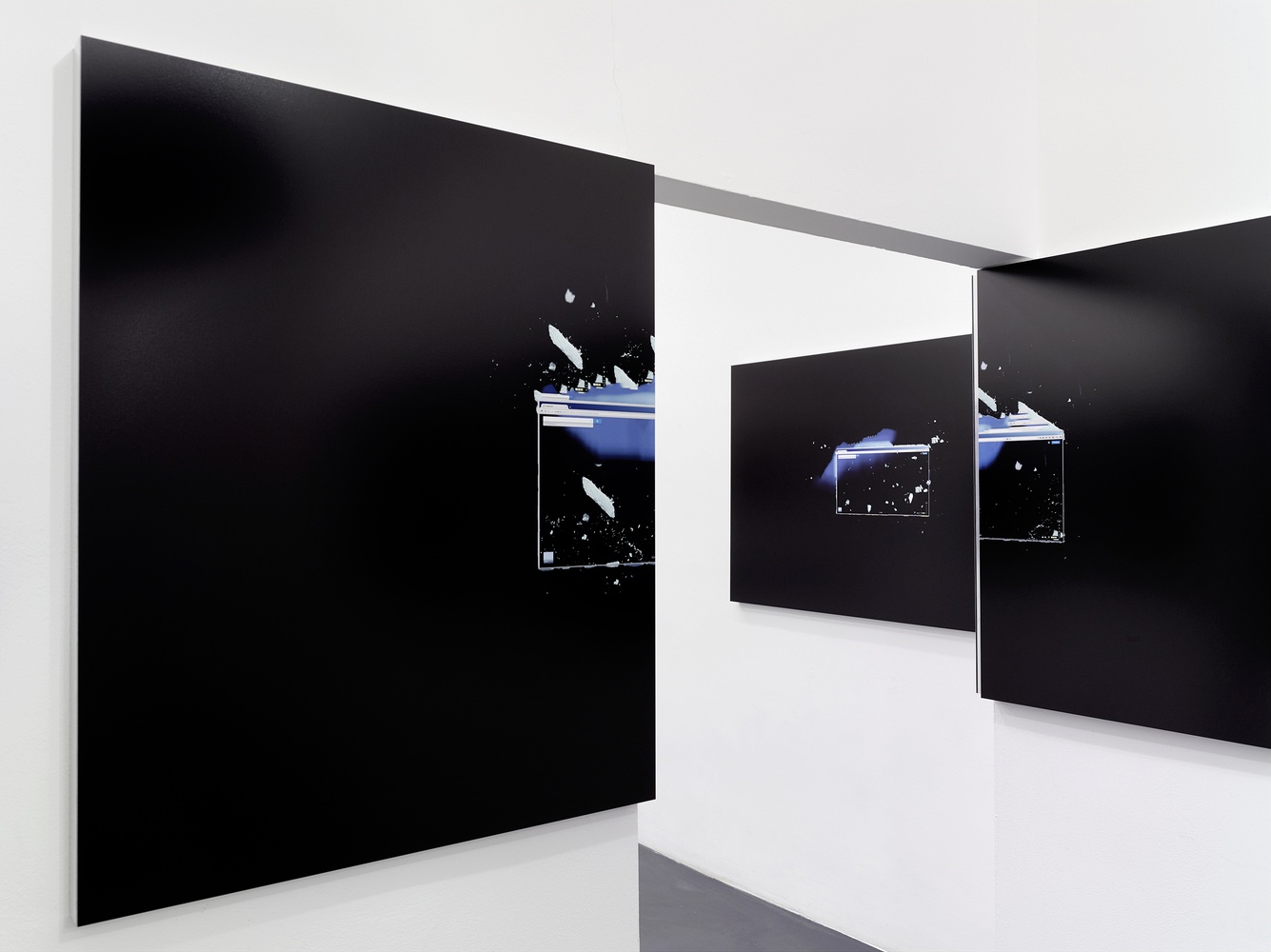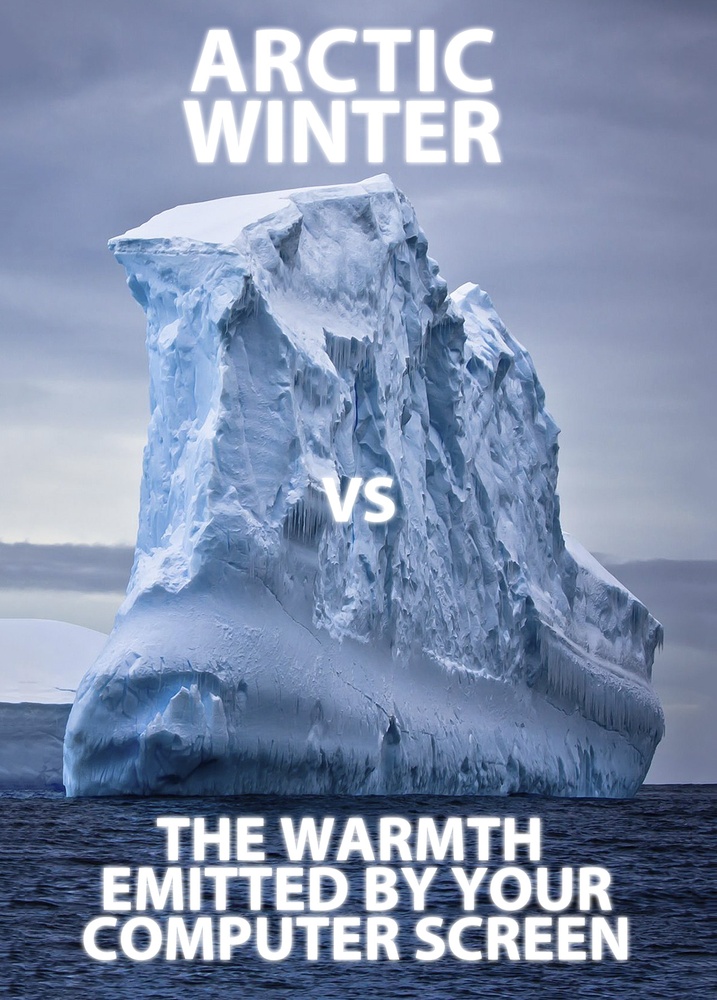In Johannes Bendzulla’s preceding exhibition "Spring 2015 – En Plein Air", questions of the subject took centre stage, addressing large scale promises of self actualisation, personal significance, expressive individuality and creativity. Above all, Bendzulla reconsidered painting and drawing as the prototypical forms of artistic expression, using classical substrates like canvas and laid paper. The winter exhibition however takes a wholly different point of departure: humans and their activities are almost entirely absent.
Each of the eight works on view shows original sized internet browser windows containing various satellite images of icebergs floating at sea. Functional elements like symbols, buttons and interfaces surround and superimpose themselves on the photographs. The windows and their contents seem to dissolve into the surrounding pictorial space. Organic details merge with the geometrical elements of the user interface. Blue colour gradients grow into their black surroundings. An automatic retouching tool, originally developed to correct very small areas in images, is responsible for the effect. The algorithm analyses the graphic structure that surrounds a selected region and attempts to find a ‘sensible’ replacement for it. The space around the motifs has been generated by just such a method – they have been expanded onto the surface of the entire image. This entirely ‘incorrect’ use of the tool (too much ‘replacement’ with not enough surrounding material to analyse) produces a kind of visual stutter in which the structure of the tool’s programming becomes perceptible. The results are images that radiate a certain minimalist elegance and technical cool while simultaneously being distinguished by an awkward roughness. This effect conveys a sense of the compulsiveness with which the program combines geometrical elements with natural structures. The algorithm also includes a randomiser which ensures that new variations are always produced despite having the same initial conditions. Thus the motifs reappear several times, but their expansion into the pictorial space always proceeds in different ways.
The use of such an automated tool amounts to a sort of artistic outsourcing, and there is a similar principle at work in the installation and presentation of the works. The uniform rhythm of the images in space appears to be more important than the integrity of the individual works. Thus two of the works on show have been split in the middle in order to better fit the architectural conditions of the space. The strategies employed in “Arctic Winter ...” – repetition, variation and the delegation of aesthetic decisions – can be understood as an attempt to advocate an artistic practice which distances itself from the ideals of total autonomy, subjectivity and self-actualisation and, instead, takes external constraints, influences and relationships as points of departure in order to arrive at a more universal reflection on our contemporary condition.
Works:
